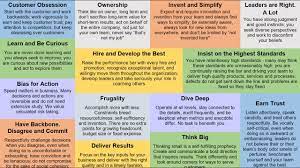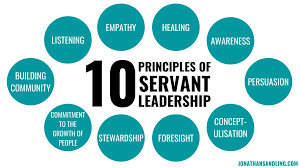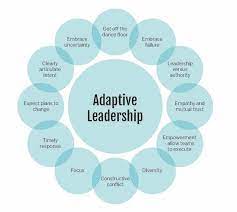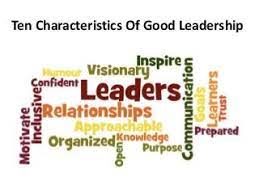A list of 14 leadership traits
The following are 14 leadership traits that are essential for any successful organization. Leaders must be able to exhibit each of these traits in order to be successful.
1. They Must Be Proactive
Leaders should always be looking for ways to improve their organization, even if it means taking risks. They need to lead by example and set the tone for proactive behavior within their team.
2. They Must Be Focused on Results
Leaders should never lose sight of their goals, no matter how difficult the situation might seem. They need to stay laser-focused on what is necessary in order to achieve success and measure success accordingly.
3. They Must Be Effective Communicators
Leaders need to be able to effectively communicate with all levels of their team in order to get them aligned and moving forward together. They must also be able to convey a clear message that resonates with those under them.
4. They Must Have a Visionary Mindset
Leaders must be able to see beyond the current situation and challenge conventional wisdom in order to see opportunities that others may not have seen before. This mindset is crucial in inspiring others and driving them towards collective success. 5. They Must Have a Strong Sense of Ethos
Leaders must have a strong sense of ethos – or the belief system that guides their actions – in order to ensure positive team morale and cohesion throughout operations. Without a strong ethos, leaders will struggle
attributes of leadership
Leadership is the ability to motivate and lead people to achieve common goals. There are many attributes of leadership, but some of the most important include charisma, assertiveness, decision-making, and communication. Here are 14 leadership traits that can help you be a successful leader:
1. charisma – A charismatic leader is able to easily connect with others and bring out the best in them. They have a natural ability to inspire others and get them to follow their lead.
2. assertiveness – A strong assertive leader knows how to take control when necessary and push for their own agenda without being confrontational. They know how to set boundaries and keep team members on track.
3. decision-making – A good decision-maker is able to make quick decisions based on the facts at hand. They don’t waste time second-guessing themselves or trying to weigh all the options.
4. communication – A great communicator is able to clearly communicate their thoughts and feelings both orally and in writing. They know how to build relationships with their team members and reach out when needed.
5. resilience – A resilient leader is able to bounce back after setbacks and keep going despite difficulty. They have a strong sense of self-confidence which allows them to stay focused on their goals no matter what happens.
6. accountability – A leader who is accountable for their actions is able to be held accountable by their team members. They make sure
Leadership traits are important for success in any field.
There are many different leadership traits that can be beneficial for success. However, some traits are more important than others. Some of the most important leadership traits include: being able to motivate others, being decisive, being able to inspire others, and having good communication skills.
Leadership is not about having all the answers. It’s about inspiring others to find the answers themselves. A good leader knows how to ask the right questions and then step back and let others take the lead.
A leader must also be able to make tough decisions. Sometimes there is no clear right or wrong answer, but a leader has to be able to trust their gut and make a decision.
Inspiring others is another key trait of a successful leader. A leader must be able to articulate their vision in a way that gets people excited about working towards it. They must also be passionate about their work and believe in what they are doing.
Finally, good communication skills are essential for any leader. Aleader needs to be able to effectively communicate with their team members in order to get them on board with their vision and goals.
Leadership traits vary depending on the field or type of organization.
Leadership traits can be broadly classified into two categories: task-oriented and people-oriented. Task-oriented leaders are those who focus on getting the job done and tend to be more directive, while people-oriented leaders emphasize interpersonal relationships and tend to be more supportive. The most effective leaders usually have a mix of both orientations.
There are many different leadership styles, but not all of them will be effective in every situation. The key is to know when to use each style and how to adapt it to fit the specific situation.
The most important thing for any leader is to get results. But how you go about achieving those results is just as important. Leaders need to be able to motivate and inspire others to achieve their goals. They also need to be able to build strong teams that can work together effectively. And finally, leaders must be able to make tough decisions, even when it means making sacrifices along the way
There are many leadership traits to consider, and it is important to find what works best for you.
There are many leadership traits to consider, and it is important to find what works best for you. One important trait is the ability to delegate tasks and trust that they will be completed. This allows you to focus on other tasks and not become overwhelmed. Another key trait is effective communication. This means being able to communicate your vision clearly and concisely so that others can understand and buy into it. Lastly, it is important to have a positive attitude—a leader with a positive outlook can inspire others to do their best work. When considering which leadership traits are most important to you, remember that the most successful leaders are usually those who possess a combination of many different qualities.
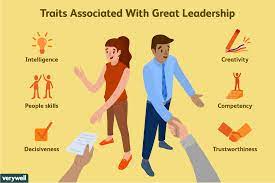
Leadership traits can be learned, and there are many resources available to help.
Some people are born with the qualities that make them effective leaders, but these traits can also be learned. There are many resources available to help people develop their leadership skills.
There are a number of qualities that effective leaders possess. Some of these include: the ability to inspire others, the ability to motivate and mobilize teams, excellent communication skills, strong decision-making abilities, and a deep commitment to their goals.
Leadership is not about having all the answers; it’s about being able to ask the right questions and then listen carefully to the answers. It’s also about having the courage to make tough decisions, even when they may be unpopular.
The best leaders are always learning and growing; they never stop trying to improve their skills. If you want to be an effective leader, start by finding resources that can help you learn more about what it takes to be successful in this role.
It is important to be able to identify and use the right leadership traits for the situation.
The ability to be decisive is an important leadership trait. This means being able to make decisions quickly and efficiently without waffling. This can be difficult in some situations, but it is an important skill for a leader to have.
Being able to motivate others is another key trait of a good leader. This means being able to inspire and encourage others to do their best work. It also includes being able to provide direction and support when needed.
A good leader must also be able to effectively communicate with those they are leading. This includes being clear and concise when giving instructions or directions. It also involves being open to hearing feedback and suggestions from others.
Leadership is a process, not a single event or trait.
Leadership involves setting a vision for where you want to go and then mobilizing people to help you get there. It is about inspiring others to follow your lead and work together towards a common goal.
There are many different styles of leadership, and the best leaders are often able to adapt their style to fit the situation. The most important thing is to be authentic and true to yourself.
The best leaders are those who can put themselves in other people’s shoes and see things from their perspective. They understand that everyone has different motivations and needs, and they know how to tap into that to get the best out of people.
The best leaders also have a strong moral compass. They know what is right and wrong, and they stick to their values even when it isn’t popular or easy.
Leaders must be able to adapt their leadership style based on the situation and team members.
One size does not fit all when it comes to leadership. The best leaders are able to adapt their style to the situation and team members. This flexibility allows them to get the best out of their team and achieve the desired results.
There are four main leadership styles: authoritarian, participative, delegative, and laissez-faire. Authoritarian leaders make all the decisions and expect their team to follow without question. This style can be effective in certain situations, but it often leads to resentment and a lack of buy-in from team members.
Participative leaders solicit input from their team and take everyone’s views into account before making a decision. This approach builds trust and commitment from team members, but can sometimes result in indecision if there is too much input.
Delegative leaders give their team members autonomy to make decisions and take action without needing approval. This style can be very effective if you have a talented and experienced team that is capable of handling responsibility. However, it can also lead to chaos if there is not enough structure or guidance from the leader.
Laissez-faire leaders take a hands-off approach and allow their team members to work independently with little interference. This
Leadership is about communication and relationships, both inside and outside of the organization.
Great leaders need to be able to communicate their vision for the organization and inspire others to buy into that vision. They also need to be able to build relationships with key stakeholders, both inside and outside of the organization.
Leadership is not about giving orders or telling people what to do. It’s about communicating your vision for the organization and motivating others to buy into that vision. It’s also about building relationships with key stakeholders, both inside and outside of the organization.
The best leaders are those who can effectively communicate their vision and inspire others to buy into it. They are also able to build strong relationships with those both inside and outside of their organizations.
Leaders must be able to set high standards and be willing to let people fail sometimes in order to learn and improve.
Leaders must be able to set high standards and be willing to let people fail sometimes in order to learn and improve. This means that leaders must be comfortable with making decisions that may not always be popular, but are necessary for the greater good. Leaders must also have faith in their team members and believe that they have the ability to reach the high standards that have been set.
1Leaders must be patient and understanding, even when things go wrong.
2Good leaders know how to keep a cool head under pressure and make decisions based on what is best for the group, not just themselves.
3A leader must be able to see the big picture and think long-term; short-sightedness will only lead to disaster.
4Leaders should also be inspiring and enthusiastic about their vision for the future; if they aren’t, it will be difficult to get others on board.
5Finally, a good leader must be honest and have integrity; without these qualities, it will be impossible to gain the trust of those they are leading.
1
. A new study has found that people who regularly eat fast food are more likely to be depressed.
2. The study, which was conducted by the University of South Australia, looked at 3,000 adults and found that those who ate fast food three or more times a week were more likely to suffer from depression.
3. The findings add to a growing body of evidence linking poor diet to mental health problems.
4. Studies have shown that processed foods can cause inflammation in the body, which has been linked to depression.
5. Fast food is also high in sugar and unhealthy fats, which can lead to weight gain and other health problems.
6. If you’re struggling with depression, it’s important to talk to your doctor or a mental health professional about treatment options.
greatest leadership quotes
Leadership traits are essential for any successful team. They help create an environment in which employees feel safe to share their ideas and take risks. Leaders who exhibit these qualities are more likely to be successful. Here is a list of 14 leadership traits that all successful leaders must have:
1. Visionary Leadership: A visionary leader has a clear and compelling vision for their organization and the future. They create a compelling reason for people to work together and strive for the common goal. They inspire others by showing them how their efforts will contribute to the larger vision.
2. Inspirational Leadership: Inspirational leaders bring energy and enthusiasm to their teams. They focus on making everyone feel included and integrated into the team’s goals. They use positive reinforcement and encouragement to get their team moving in the right direction.
3. Proactive Leadership: A proactive leader anticipates potential problems and takes steps to address them before they become problems. They keep an eye on the big picture and think ahead so that they can make informed decisions quickly.
4. Moral Leadership: A moral leader is trustworthy, honest, and fair-minded. They lead by example and put the needs of their team first, even when it means compromising their own agenda or position.
5. Delegation Skills: A leader must be able to delegate tasks effectively in order to maintain overview of the overall mission while still providing oversight for each individual task. This allows the leader to focus



